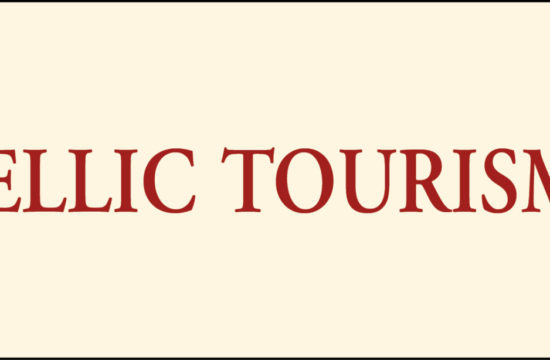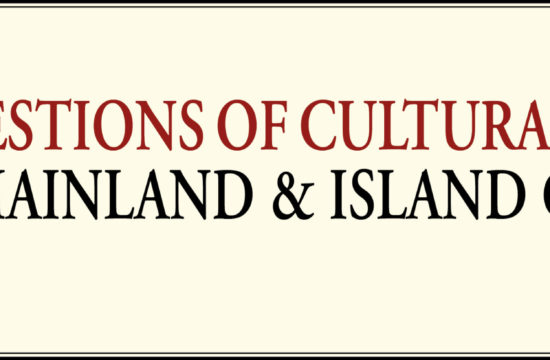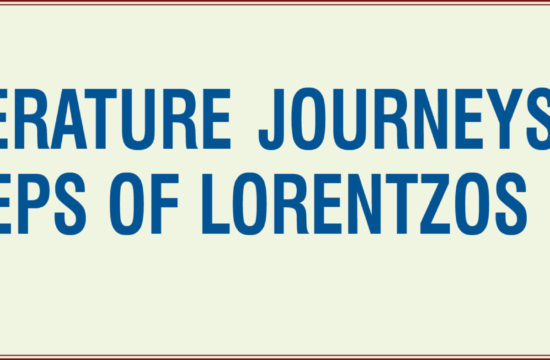Maniou Fotini
Maniou Fotini (fvtinimaniou@yahoo.gr). Master of International Studies from the University of Aegean
Katoga Ariadni (ariadnikatoga@gmail.com) student of university of west attica. Department of tourism Administration
ABSTRACT:All travel texts are a very rich material for the recent history of Hellenism. They give the factual data, the daily life, the customs, the antiquities, the monuments and the events during the years.
The Greek islands and Greek culture were centers of interest to many travelers from the 15th to the 20th century. The theoretical knowledge of these travelers and their ideologies, clashed with the experiences they gained from their travels, which is reflected in their travel texts.
The purpose of this work is a) the concentration of information regarding the society of Lesvos during the 19th century, from some traveler’s texts, who gave the stigma of the time and b) to investigate the factors that attracted travelers to visit Lesvos in the 19th century.
KEY WORDS: travel texts, travel, Lesvos Taxiarchis Michael,Mantamados.
Chronology
Travel texts can give researchers a clearer picture of the past, as they consist of an important source of texts, from which, data are derived from the daily life of the older generations of the inhabitants of different areas. They also include details about the social interaction of Greek people.
The Greek territory is considered to be for many and varied reasons, a pole of attraction for travelers, who often coexisted with the permanent residents for quite some time and produced multifaceted work, depending on their interests. At this point it should be clarified that the area that was considered Greek at the time, covered one wider area on both sides of the Aegean Sea .(Manola, Tsatalbassoglou, 2020)
The northeastern Aegean was from the 16th to the 19th century, a station for travelers to Istanbul. In the texts of the monk from Florence, Cr. Buondelmonti in the 15th century, we find many references to Lesvos, which, during the following centuries, were enriched by other travelers. The texts refering to the 16th century travels, contain excerpts about Lesvos, but the testimonies resulting from them, are not the result of tours of the island. During the 17th century, other information is incorporated in travel texts, such as mythology, modern geographical and demographic parameters, philological stories etc .. Concerning the port of Lesvos and other locations, there are records existing from the early 18th century. One of them, is, J.Pitton’s de Tournefort (1717) version, released after his voyage to the Aegean Sea and considered to be a guide for travelers.
In 1714, Le Bruyn presented Lesvos through painting in a more plausible way, while R.Pococke approached the antiquities and the Roman Aqueduct in Moria, through his writings.
The issue of the aqueduct was also approached by the Frenchman Choiseul-Gouffier (late 18th early 19th century) through his work, in which he presented the archaeophile and philhellenic spirit of his time, but also introduced the image in travel magazine. In addition, Chr. Wordsworth, in his basically historical work, also approached the Roman Aqueduct, with a different art approach(Manola,2019).
Lesvos began to emerge during the 18th-19th century, where the research for ancient Greek finds and local color is particularly intense. In the texts of Sonnini, Choiseul-Gouffier, Olivier, Dallaway, Castellan, Didot and Turner the city and port of Mytilene are being analyzed, as well as the olive cultivation, Molyvos and the life of the inhabitants combined with the geomorphology of the island. In the 19th century the descriptions are more detailed and intense, highlighting villages and settlements, ancient cities and sanctuaries, crops and products, activities and customs of the inhabitants, daily public and private life, commercial traffic and the island’s relations with Hellenism. This is the time when Lesvos has been visited by travelers, scholars, geographers, cartographers, archaeologists, doctors, priests,scientists, architects, engineers, writers and many others. Traveler’s record information about the island, occurred after their stay there, either for many months, or for a few hours, or after their observing from the handrail of the ship, during their journey to another destination. In the „Illustrated London News“ (1842-1885) and „The Graphic“ (1869-1885), locations, people and events from Lesvos are depicted, from the period 1842 to 1885.
In the early 19th century, in Von Stackelberg’s Album (1828) women’s local costumes are presented but also in the edition of A.L.Castellan the same topic is being presented by a very good quality of colored engravings. At the same time, officials, itinerants, vendors and the daily life of the inhabitants are depicted in the paintings of Lechaise (1821). (Viggopoulou, 2005).
Brief history of Lesvos at late 19th
The Lesbian scholar and priest, Stavros Taxis, presented the book „Summary history of Lesvos and its topography „at the end of the 19th century. Specifically, in its first edition (Cairo 1874) a detailed geographical description of the island is being presented and at the same time an analysis of the social situation. Geographical features, society, population and economy of Lesvos, at that time, were the object of his remarks. However, during the 19th century, it was not the economy that had been studied in depth, but rather the current social situation. In the second edition of his book (Cairo 1909), which was more extensive, he included descriptions of ancient monuments and inscriptions, but without reference to what data he had cited in the 1874 edition. Only two Greek archaeologists observed the work of S. Taxis, Seraphim Charitonidis who, while having referred to the investigation of Taxis, he did not mention the inscriptions in his own work, which became known through the reports of the priest-traveler S.Taxis. In addition, I. Kontis, used the geographical and demographic data which have been cited in Taxis work. Six from the inscriptions published by S.Taxis were the subject of study to prior publications. Five inscriptions were included in William’s work R.Paton „Inscriptions of Lesvos“, which had been published in 1899 and one more inscription had been published in 1909. Although S.Taxis’ Copies of the inscriptions have been characterized as inaccurate, he gave the stigma of the exact location of the stones and at the same time, he decoded more letters than the archaeologists.
The two editions of the book, which are 35 years apart, give the opportunity to the reader to become an observer of the social developments at Lesvos, but also of the problems of the island. From S.Taxis’ point of view, the reader witnesses the changes over time.
The transition from Turkish slavery to freedom and the economic development of Lesvos, were a source of inspiration for him (Chaniotis, 1997)
Education
At the end of the Ottoman period, a barrage of economic and social changes took place at Lesvos, which were related to what was happening in the wider area of the Ottoman Empire and the newly established Greek nation.
With the growth of the middle class, the increase of the population and the
development of nationalism, the foundations for further changes in society have been set. The physiognomy of the island was determined and the conditions were created for the final integration of Lesvos to the Greek state. The greatest role in the effort to develop national consciousness and nationalist ideology, was played by the institution of education. The teachers of the island contributed to all these social changes by participating in the cultural and spiritual life of the place. The organization of schools was undertaken by the bourgeoisie, but the operating costs were exorbitant and as a million tuition fees were imposed, the citizens were dissatisfied. Until 1873, the students of all levels had to pay tuition according to the salary of each professor. As a result of this, students from lower socioeconomic backgrounds had been facing financial hardship.
In 1873, tuition fees for the students whose parents were citizens of the city of Mytilene, had been abolished, a fact which provoked the protest of the citizens living in Lesvos villages. Given the intensity created due to the above separation, in the last years of the Ottoman period, the Ephorate of Charitable and Educational Branches, represented by the Church and the respective Metropolitan, resorted to increasing tuition fees for all students and especially for the newly established commercial department of the Gymnasium. The need to include education in a stronger body, such as the one of the Greek State, was obvious and necessary. (Lykiardopoulou,2008)
The Socio-economic situation
The socio-economic situation of the inhabitants of the island according to travel texts, appears as follows: There were the lower layers, which consisted of workers, followed by small professionals and then several landowners and merchants. Trade and industry flourish from the Greeks of the island and the arrival of the steamships triggers the imports and exports of the island. With the profits from the trade, many inhabitants buy land and as a consequence a very big part of the lesbian land, passes from the Turks to the Greeks.
The new bourgeoisie acquires important positions within the Greek Orthodox community and wins some of those, which had been owned by Turks. Despite this internal development, the working class remains weak and the living and working conditions are miserable. This resulted in the creation of social conflicts in the towns of Agia Paraskevi and Vrisa in the decade 1880-1890. The development of an ideology favorable to the „proletariat“, seems impossible even though the lower social class, constitutes the largest part of the population and practice a large number of professions: masons, stonemasons, fishermen, porters, servants, farmers, gardeners, etc. Concerning the middle social strata, from 1912 and onwards, they begin to grow rapidly, and consist of a variety of professions, such as traders, brokers, teachers, engineers, clerks, ranchers, etc. Finally, the high social strata, consist of people practicing professions such as lawyers, doctors, pharmacists, judges, directors, bankers etc., people in general, who were wealthy. The transition to liberation from the Turkish yoke in the late 19th century, for Lesvos, is being characterized by an inclination towards western standards for the high society in terms of living, clothing, building, and entertainment. This period will be characterized by great economic development and political liberalization. On the contrary, the lower strata still survive in poverty. Capital gains invested abroad are increasing, and part of these funds is disbursed and used for the construction of west type luxury homes. (Lykiardopoulou,2008)
The Architecture of the island
The financial affluence, the class and nobility of the Mytileneans, is evident in written texts, which refer to the particular architecture of their houses. The upper social strata are in a situation of cultural pursuits, which is also reflected in their architecture. During the period 1880-1912, the last years of Turkish rule, the wholesalers, industrialists, bankers and landowners, form a new hegemonic class and compose the „aristocratic stratum“, heading towards the liberation from the Turkish yoke. Urban dwellings after 1850 are not exclusively a continuation of Turkish architecture, on the contrary their construction is in line with European standards with certain characteristics of the Byzantine, Greek and Islamic elements. At the same time, they represent the wealth that came from trade and shipping, and this is the reason why they are called „mansions“. There were basically three types of buildings: The houses built by the landowners, consisted of two floors of main residence and a basement for auxiliary functions. The toilets were placed in independent sections outside the residence. In the basement (ground floor to the sidegarden) the kitchen and the service rooms were located, while the reception areas, living rooms and dining room were on the top floor. The houses of the merchants and entrepreneurs with financial dealings in rich foreign countries, were located on the outskirts of the city or around the castle and consisted of four levels with an attic, where the staff lived. In the basement (lowered ground floor) the kitchen and the laundry were located, while on the elevated ground floor, someone could see the reception areas for the visitors and on the second floor the bedrooms. The architecture of these „urban mansions“ was unquestionably influenced by Neoclassicism and the „Beaux-Arts“. The third category of houses around 1900, is presented as follows: The existence of a formal floor, where someone could see the main reception areas: the living room, the large hall and the dining room along with the living areas that were the kitchen. Their construction was not characterized by classical symmetry, while their architecture was in harmony with the natural and historical environment.(Stylianidou & Ganelli, 2020)
“Taxiarchis Michael“ in the village of Mantamados
Αnalyzing 19th century in Lesvos, based on writings, we must definitely refer to the Taxiarchis Michael of Mantamados at Lesvos. The village Mantamados, in northeastern Lesvos, is thirty-seven kilometers away from the city of Mytilene and in 1909 it housed about three and a half thousand inhabitants, while in 2011 census, it was found that it had only a thousand. It is adjacent to the Turkish city of the Greek Kydonia, Ayvalik, as they are separated by seven navies miles. The village has a long history and the sources to which we find references, date from 1.548, through a tax Ottoman settlement.
But apart from the Turkish sources, there are also other sources and narrations by Greeks, as the one from a supreme priest of the province of Mithymna, who left the island in1622. Embracing Catholicism and being far away, he decided to describe Mytilene based on the old memories he had. He is the Greek, who first described the temple of the Archangel Michael, the courtyard of the temple and His image. Another source mentions thirty-nine years later, the monastery of Taxiarchis in Mytilene, as a member of the monastery of Molyvos. In 1728 the ecumenical Patriarch Paisios, assigns to two residents of the village to proceed on a tour arround Greece, in order to raise financial aid for rehabilitation of the temple of Taxiarchis. From this source, it appears that the monastery had already existed, but it was not in a good condition, although it was a place of religious worship by the entire population of the island and by travelers, as is the case also today. The Love for Taxiarchis Michail, was unquestionable for all the inhabitants and affected their daily lives, but also for the inhabitants of the opposite beaches of Asia Minor. Based on data and sources from the fees of the 18th century to the 19th century, we realize this great worship, through writings for religious events that took place at the island, especially on November 8, the day of the feast of Taxiarchis Michael and Gabriel, according to the Orthodox feast.
Mantamados‘ direct contact with the rich coasts of Asia Minor played an important role in the socio-economic growth of the island. It is the time period during which the third renovation of the church takes place, with its inauguration being carried out by the metropolitan Mithymnis, Nikiforos Glykas on May 8, 1888. But this worship is not
unilateral. On November 8, 1912, the date of the official celebration of Taxiarchis Michael and Gabriel , during the landing of the Greek troops on the island, with His divine intervention, the attack of the Turks, was prevented. (Michaelaris, 2012)
On the feast of Taxiarchis, an ancient custom takes place related to the sacrifice of the bull and the preparation of traditional food to host pilgrims. This custom of sacrifice comes from the most interesting evidence of the survival of pagan cults and its combination with the Christian folk traditions, as they were formed and presented in the Christian reality. It refers to the ancient animal sacrifices to the gods and to all the events that took place at the same time, such as, scales, votive offerings, horse races, music, dancing with Dionysus and Bacchic ceremonies with magic and superstitious acts. [1](Manola.2020)
Conclusions
From all the above it is depicted that the development of Lesvos in the second half of the 19th century was very big. An important reason was the chronic period of „Tanzimat“- the reform framework of the Ottoman Empire and the conditions of Kyutsuk Kainartzis and Iasi. Thus the industry developed, as well as the shipping, agriculture, trade and the port of Mytilene was transformed to a great commercial port of the East .The flourishing of trade, imports and exports inevitably promoted investment, both in Lesvos and in Asia Minor beach. These investments resulted in its economic growth and in the availability of funds. Furthermore, in 1885 in Mytilene there were 279 olive mills, 36 soap factories, 13 tanneries and 165 windmills. The above development automatically led to the promotion of the educational system and cultural development. Many schools were founded in the province of the island, with the Mytilene High School to be considered as a model and recognized by the University of Athens in 1845.
This period of development, influenced the architecture of the island as well. Many mansions were built, initially with elements of both west and east characteristics, while in the last twenty years of the 19th century, the influence of the European style became more evident. At the same time, emphasis was given to places of religious worship as at the case of Taxiarchis of Mantamados, the helping Divine Angel of the island, with the main concern of people being to renovate His monastery.
Many scholars, clergy and scientists traveled to Lesvos with the main focus on capturing the pinnacle of economic, social, political and intellectual, progress through their works. Among them, the clergyman S. Taxis, with his book „Summary
history of Lesvos and its topography „at the end of the 19th century. Alongside many foreigners also approached Lesvos and recorded its entire course during 19th century: French, English, Germans, seeking contact with the classical ideal of their studies. We could say that the tour in Greece and especially in Lesvos during the 19th century was a European trend, for the purpose of obtaining contact with antiquity and the search for political, social, cultural values, in complete harmony with the character of each traveler and his internal searches. (Lambrinou, 2007)
SOURCES
Ioli Viggopoulou, (2005) “TRAVELERS IN THE NORTHEAST AEGEAN: TREKKING, CRUISES AND CROSSWARDS MEETINGS,” MYTILENE AND AYVALICK (KYDONIA): A TWO-WAY RELATION IN THE NORTHEAST AEGEA”: Fifth International Conference on History, 2007, Institute of Modern Greek Research – National Research Foundation, Athens, Greece.
Chaniotis, A, (1997) NEW INSCRIPTIONS FROM OLD BOOKS. INSCRIPTION OF AIGION, DELPHI AND LESVOS COPIED BY NICHOLAS BIDDLE AND STAVROS TAXIS. Tekmeria, 3, pp.7-10
Lambrinou, X, (2007) PROPOSAL OF MULTIMEDIA APPLICATION FOR THE PRESENTATION OF THE HOUSES OF THE UPPER BOURGEOISIE OF MYTILENE (1850-1030) Postgraduate thesis. University of the Aegean.
Lykiardopoulou, S (2008) SOCIETY AND EDUCATION IN LESVOS AT THE END OF THE OTTOMAN PERIOD 1830-1930, Doctoral Thesis, University of the Aegean
Manola, M. (2019), LITERATURE-TOURISM-CULTURE, Ed. Tsotras , Athens
Manola,M.(2020) TOUR CULTURALI A LESBΟ Le particolarità religiose e il sacrificio del toro ITI-Intercultural Translation Intersemiotic e-ISSN:2241-3863 iTi Vol 9, no 1
Μanola, M. &Tsatalmpassogloy, E.(2020)CAUSAL RELATIONSHIPS INCASES OF RUSSIAN RELIGIOUS AND MILITARY PERAMBULATIONS/TOURING FROM 1750 το 1857 Sustainable Development, Culture, Traditions Journal (SDCT-Journal) Volume1
Michailaris, P, (2012) THE VILLAGE OF MANTAMADOS OF LESVOS AND ITS TAXIARCH-LOCAL SOCIETIES IN THE SEA AND MOUNTAINIOUS AREA IN THE SOUTHERN BALKANS: 18TH-19TH CENTURY, Proceedings of the Corfu Symposium, May 24-26/2012, Corfu ,Greece
Stylianidou, E, Ganelli, E et all, (2020) „THE FAMILY IN THE MANSIONS OF MYTILENE“, Open Schools Journal for Open Science, 3, pp.1-6
[1] In the New Testament, the Archangel Michael is the one who will announce the second coming of Jesus Christ and the rapture of His church. He leads an army of angels into war in heaven, against „the great Dragon, the ancient serpent, Satan“ and the demons, where Michael prevails and throws them on earth. Various traditions say that the Archangel Michael appeared in Mantamados of Lesvos in his attempt to preserve the monastery of the area.









